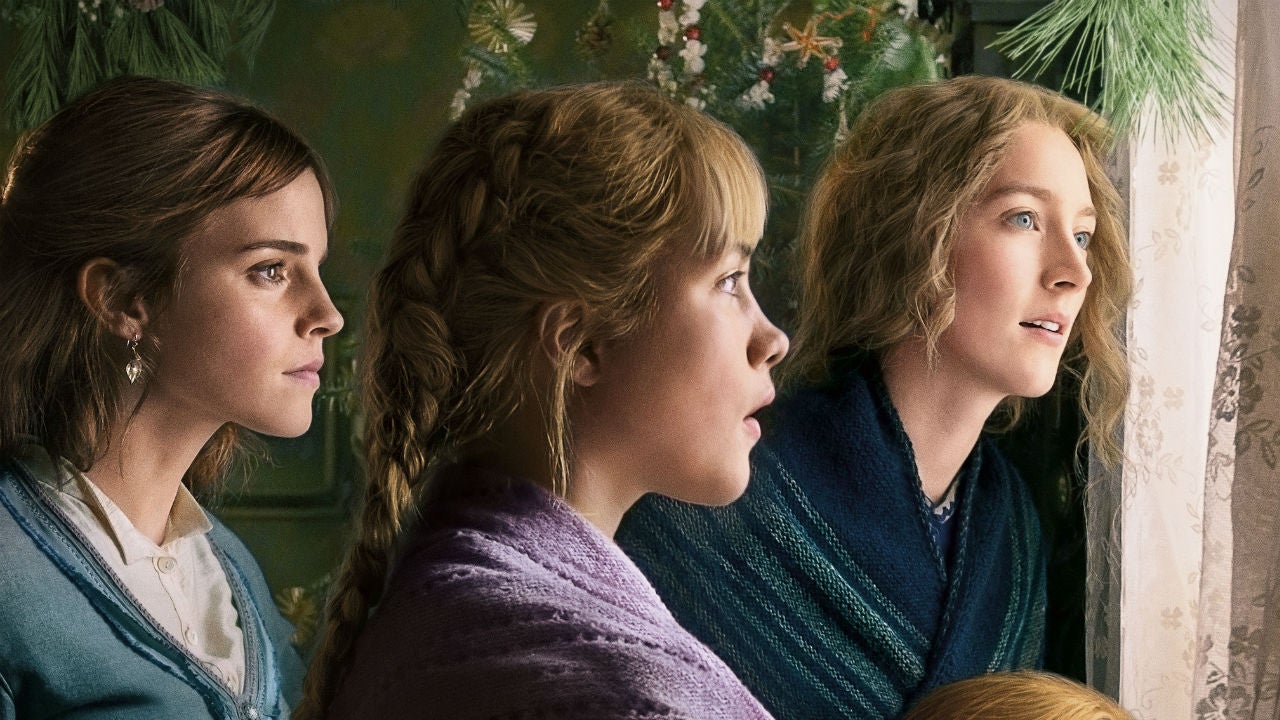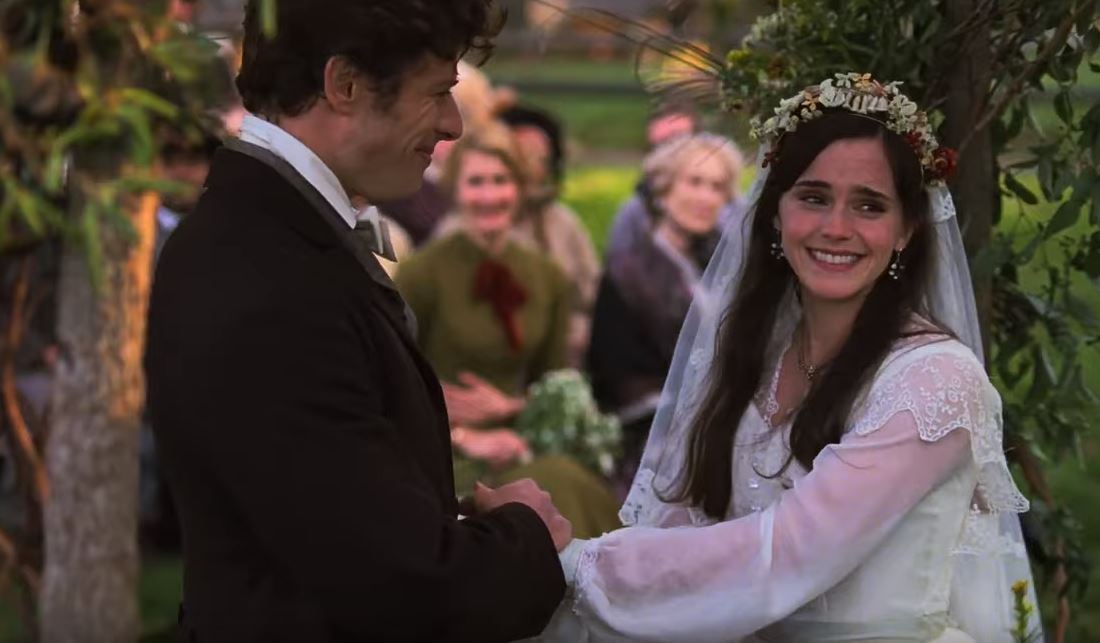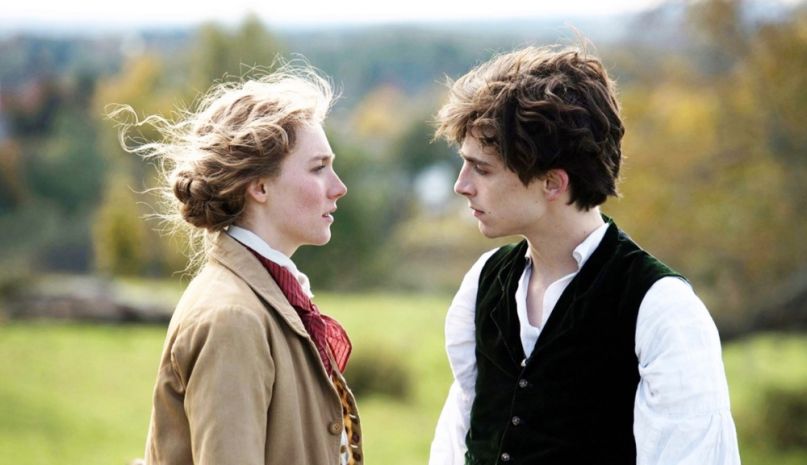Adapting a classic novel that has already hit the screen a dozen times is one of the most thankless cinematic tasks out there. If it’s been made that many times, chances are someone else has already delivered the definitive version, and even that probably pales in comparison to the way the novel is beloved by countless fans. Why even do it?
Louisa May Alcott’s “Little Women” has actually been adapted a dozen-and-a-half times. IMDB shows 17 previous incarnations if you count TV series, TV movies and theatrical releases, plus another two dozen TV episodes titled “Little Women,” which probably have nothing to do with the novel. The reason to make an 18th, generally, is if you have a genuinely new take on it. The reason for Greta Gerwig to make an 18th, specifically, is her own new take, which involves shuffling the narrative chronologically, perhaps to highlight the text’s feminist undercurrent. Without knowing most of those 17 previous versions of the story of the March family and their four precocious daughters, I can’t be sure that no one has done this before. I can be sure that no one has done it quite the way Gerwig has.
Gerwig, you may remember, has only recently become a writer-director. She cut her teeth acting, and it’s starting to look more and more like “cutting her teeth” is the right description; she has not appeared in front of the camera since 2016, though she did provide a voice in Wes Anderson’s 2018 film Isle of Dogs. It was 2017 when she wrote and directed Lady Bird, the universally acclaimed coming of age story that also stars her Little Women lead, Saoirse Ronan. That got an Oscar nomination for Best Picture and earned Gerwig herself a rare best director nod for a woman, only the fifth in history. Yet even for those who adored Lady Bird, Little Women seems like the greater achievement, at least technically and structurally, by leaps and bounds.
Gerwig destabilises fans of the novel right off the bat, revealing less than ten minutes into the film that the novel’s romantic lead, Theodore “Laurie” Laurence (Timothée Chalamet), has already been rejected by the novel’s heroine, Jo March (Ronan). That doesn’t come until deep into part two of the novel, a part that was actually published separately under a different title (Good Wives) when it originally appeared in print. Revealing this information up front – it doesn’t actually get staged until later in the movie – is consistent with modern storytelling methods in a way that might be irksome in lesser hands. The kind of lesser hands that start with the story’s climactic moment, then drop the text “TWO WEEKS EARLIER” on the screen, before working their way up to that climactic moment again.
This is not what Gerwig is doing. Instead, she’s giving us Jo’s independence as a woman, her freedom from the societal norms of 1860s Massachusetts, at the start of the movie, allowing us to develop our understanding of Jo through decisions she has yet to make for the majority of Alcott’s narrative. It provides a very useful context in contrast with her sisters, some of whom are far more traditional.
Meg (Emma Watson) longs to act on the stage, but is also an incurable romantic who has eyes for Laurie’s tutor, John Brooke (James Norton). Beth (Eliza Scanlen) is an aspiring pianist, but is sickly, having suffered multiple bouts of scarlet fever. And Amy (Florence Pugh) wants to become a painter, but has the most pragmatic views on the need to marry rich, in accordance with the cynical whisperings of her Aunt March (Meryl Streep). As Jo is an aspiring writer, all four sisters are seeking some form of professional fulfilment beyond just being an ornament on their husbands’ arms. Which does not mean they will all get there.
Although the text certainly engages with the ways they either bristle against society’s expectations or yield to them, and these moments can be quite moving, the essence of this film is one of nostalgic warmth. Gerwig has assembled this story as a collage of delightful escapades, as the girls frolic on the beach, dress up as men in their acting club, and wrestle around on the floor in mock (or sometimes real) anger. As these escapades jump around in time, Gerwig does need to provide us some assistance in terms of orientation. She does so with a number of useful techniques, from coloured filters on the film stock to the lengths of Jo’s hair (she sells her hair to help support the family while their father is fighting in the Civil War).
Gerwig also gets help from perhaps the film’s acting standout, Florence Pugh, who plays ages 13 to 20 across the seven years of the narrative. You can tell what age Amy is supposed to be in any given scene by the way the 24-year-old Pugh plays the role of an impulsive child given to outbursts of joy and vindictiveness, or squelches that side of her personality once she’s matured. There may be no more emblematic moment than when she spasmodically upends a bowl of popcorn upon seeing the surprise return of her father, played by an actor whose identity is also a delightful surprise.
The effect created by the film’s interweaving of scenes is highly sentimental, but in the best possible way. Watching Little Women is akin to an inventory of one’s own memories. We don’t remember chronologically, but rather, we let one moment remind us of another that either compared favourably or contrasted dramatically from the previous moment, no matter when it may have occurred in our history. From the combination of all these moments, meaning is derived.
The benefits of the non-chronological narrative are perhaps most evident in a few scenes of doubling in the girls’ narrative. Without giving away anything about a book that was published 152 years ago, there’s a tragedy that befalls this family that was prefigured by an earlier moment in their lives that did not have the same outcome. By dramatising these scenes consecutively instead of separated by 30 minutes in the movie, Gerwig extracts all their available pathos. The effect is profound.
If Gerwig’s goals really are to push a feminist agenda, she does it in about the least obtrusive way possible. There isn’t a single man upon whom she pins the role of villain. The various romantic leads are portrayed sympathetically, as is Laurie’s endearing grandfather, played by Chris Cooper, who gives generously to the Marches when they are at their most destitute, even bequeathing a piano to Beth.
The closest thing Little Women has to a villain is Tracy Letts as the publisher who stands for the stodgy establishment in a rather literal way. When Jo brings him her various writings in order to earn $20 here and there, he makes such patriarchal insistences as “your heroine must end up either married or dead.” But the several scenes between Jo and the publisher are among Little Women’s funniest, as they give voice to the film’s themes through the dialogue, but also benefit greatly from Ronan’s and Letts’ comic deliveries.
The other reason to adapt a novel with a dozen-and-a-half previous adaptations is because you know that you can do it. You know that you’ve assembled the perfect cast to realise your vision, that you’ve engaged the right professionals to visually recreate your chosen time period, and that you, yourself, are ready. Greta Gerwig has ticked all these boxes, and she, herself, may have made the definitive version of Little Women.



